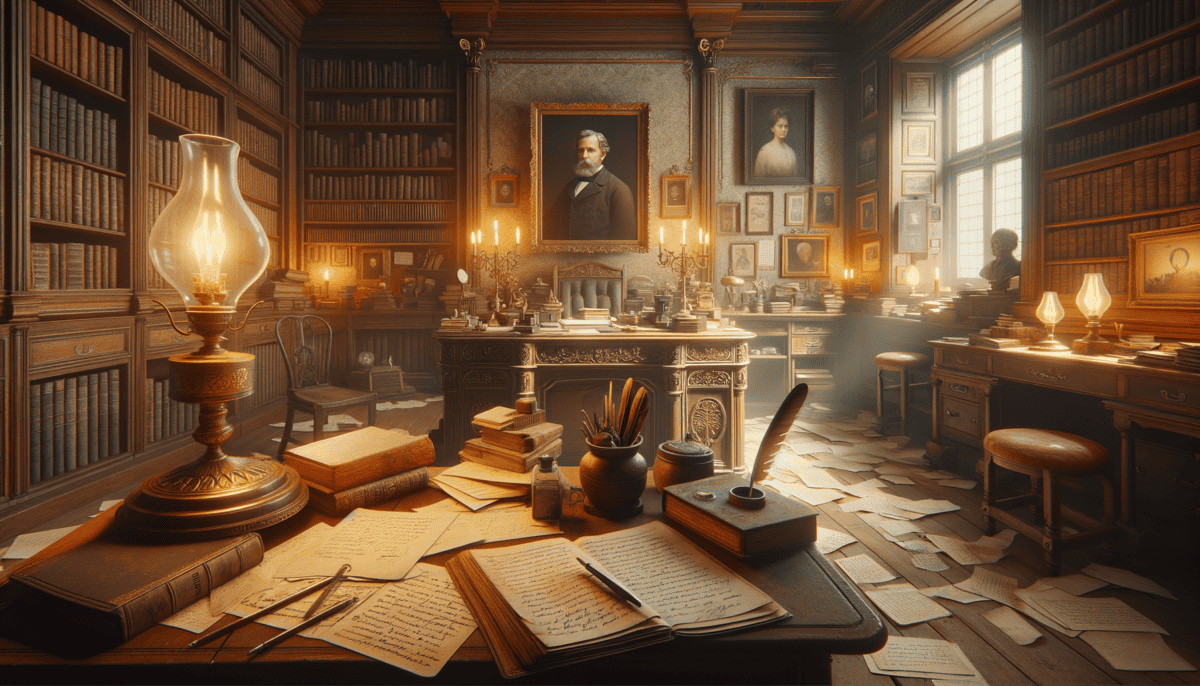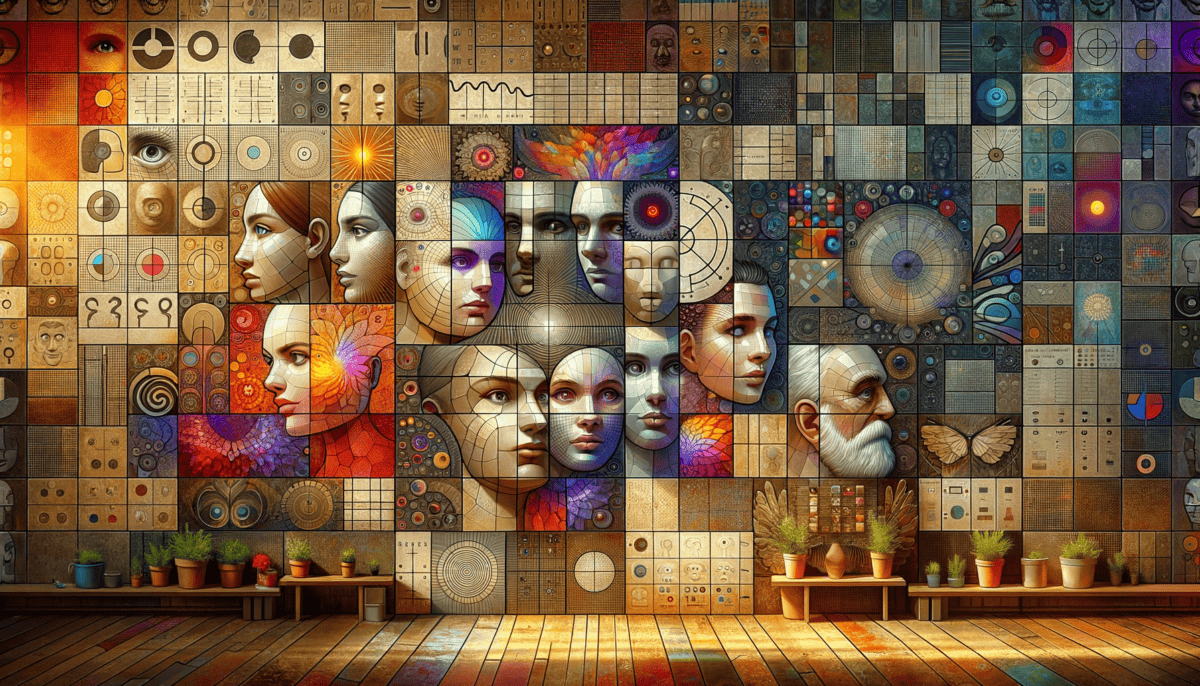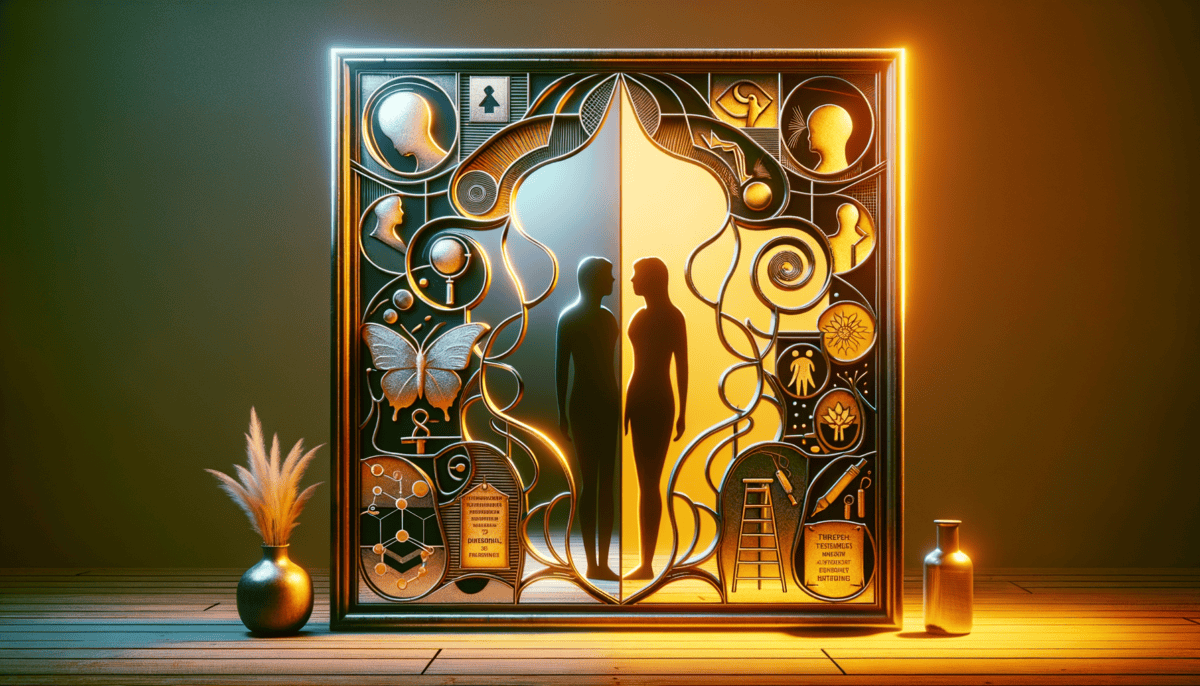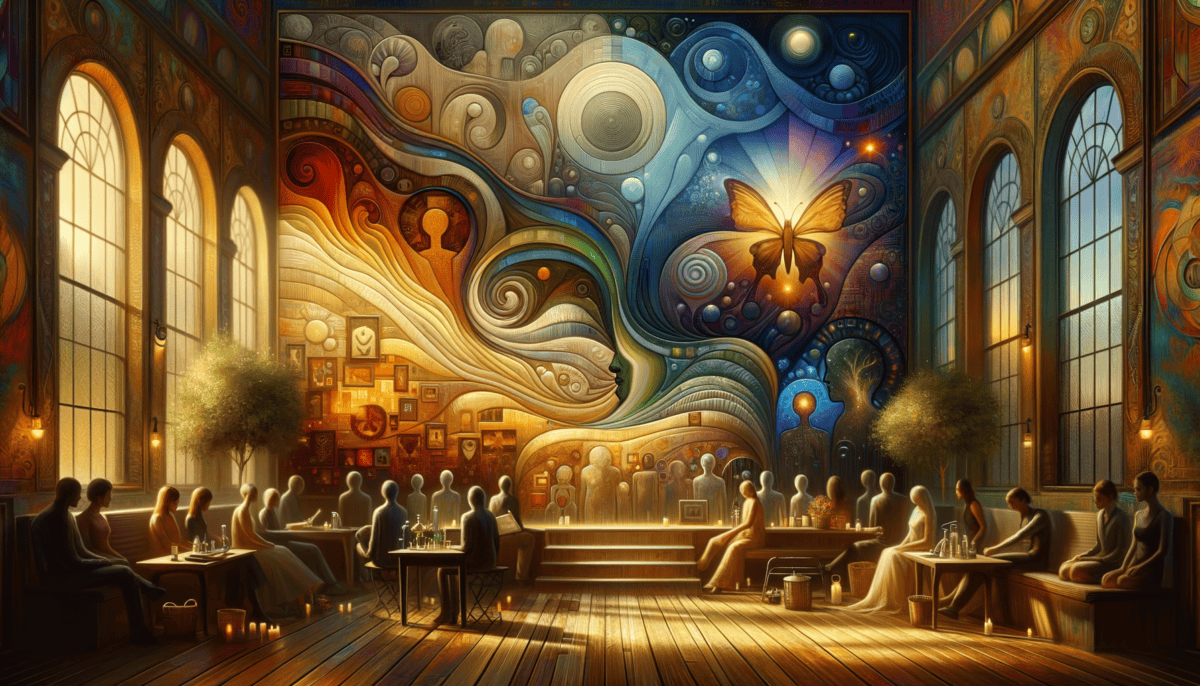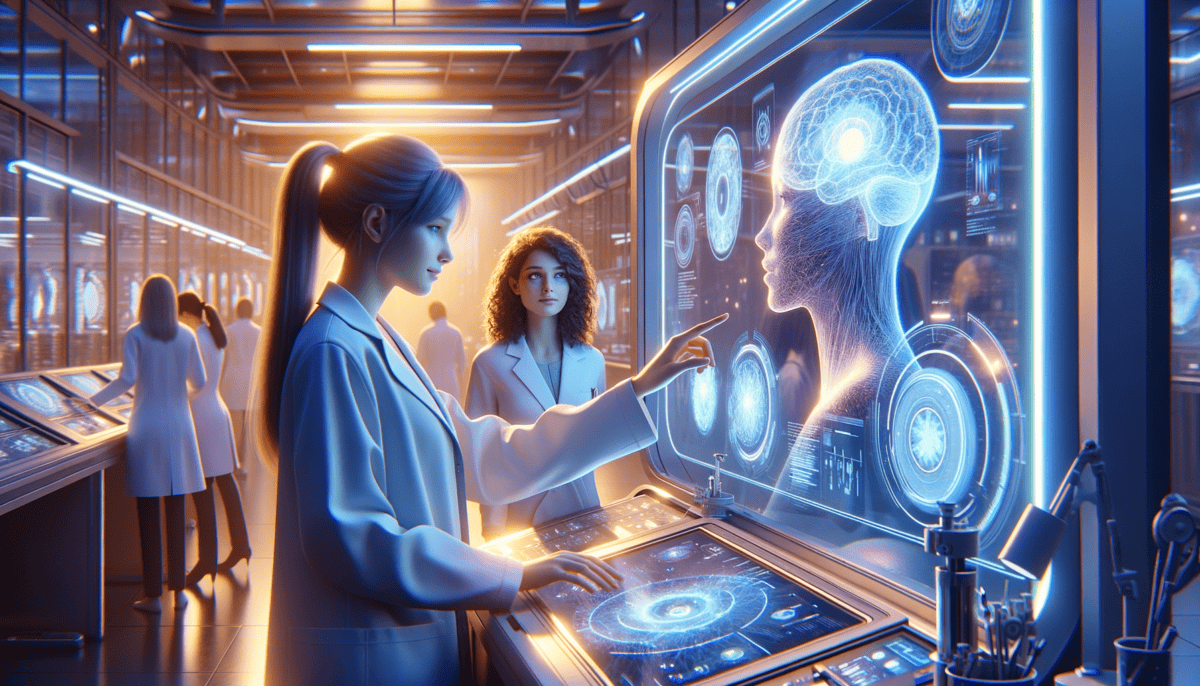The First Whispers
In a dimly lit room at the Vienna General Hospital in 1879, Dr. Emil Kraepelin sat at his wooden desk. He was writing about something new – different ways people think and feel.
“There must be a way to understand these patterns,” he whispered to himself, scratching notes with his quill pen.
Back then, doctors were just starting to learn about the mind. They noticed that some people acted in very different ways. Some people found it hard to care about others’ feelings. Others seemed to have no feelings at all.
The Big Discovery
Dr. James was walking through the hospital halls when he saw two patients. They looked the same on the outside, but they were very different on the inside.
“Tommy never feels bad about hurting others,” said Nurse Mary. “But Billy feels nothing at all – like he’s frozen inside.”
This was important! Doctors started to see that there were two different kinds of people who had trouble with feelings:
• Some people learned not to care about feelings (they called these people sociopaths)
• Others were born with very different feelings (they called these people psychopaths)
A New Way of Helping
Dr. Sarah Jenkins picked up an old leather book. She smiled as she read about the old days.
“We’ve come so far,” she said. “Back then, they didn’t know how to help these people. Now we know everyone deserves understanding.” ❤️
Special Note: Even though some people’s minds work differently, every person is special and important.
The doctors wrote everything down in big books. They wanted to help people understand that having a different kind of mind wasn’t bad – it was just different.
Learning Together
Little by little, doctors learned more. They started asking better questions:
“Why do some people feel different?”
“How can we help them?”
“What makes each person special?”
They learned that our minds are like fingerprints – no two are exactly the same. Some people’s minds just work in very different ways.
Young doctors joined the older ones. They brought new ideas and better ways to understand people’s minds. They knew that understanding was the first step to helping.
The sun was setting outside the hospital windows. Dr. Kraepelin looked at his notes one last time. He knew this was just the beginning of a long journey to understand how people think and feel differently.
As night fell, he could hear the excited whispers of other doctors sharing what they had learned. They knew that tomorrow would bring new discoveries about the amazing human mind.
The Genetic Puzzle
Dr. Lisa Chen walked into her bright lab one sunny morning. On her desk sat two special pictures – brain scans of twins! They looked almost the same, but something was different.
“Look at this!” Dr. Chen called to her friend Dr. Tom. “These twins grew up in the same house, but their brains work so differently!”
Nature’s Blueprint
Scientists like Dr. Chen study why people are different. Some things come from our genes – like having blue eyes or brown hair. But other things come from how we grow up.
“It’s like planting two same seeds,” Dr. Tom explained. “If one gets lots of water and sunshine, and the other doesn’t, they grow differently.”
The Brain’s Story
Dr. Chen looked at more brain pictures. Some showed happy, caring brains. Others showed brains that had trouble with feelings.
“Every brain tells a story,” she said. “Some people are born with different feeling centers in their brains. Others learn to shut their feelings off because of hard times.”
Important Note: Our brains can change and grow. Just like muscles get stronger with exercise, brains can learn new ways to feel.
The Big Questions
Scientists found these important things about minds that work differently:
• Some differences come from our genes (nature)
• Some come from how we grow up (nurture)
• Most are a mix of both!
Dr. Chen picked up a special camera that could look inside brains. “The more we look,” she said, “the more we learn how special each brain is.”
Growing Understanding
Dr. Tom brought in more pictures. “See these parts that light up? They show feelings happening in the brain!”
They learned that some brains have trouble with:
– Feeling other people’s feelings
– Knowing right from wrong
– Controlling strong feelings
Hope Grows
As the day ended, Dr. Chen smiled at her pictures. “Every brain is like a puzzle,” she said. “The more pieces we find, the better we can help.”
Remember: Just like flowers need different things to grow, brains need different kinds of help to be their best.
The lab lights dimmed, but the excitement stayed bright. Tomorrow would bring new chances to solve more pieces of the brain puzzle. New ways to help people understand their special minds were just waiting to be found.
Looking Deeper at Different Minds
Detective Sarah Jones sat at her desk, looking at two folders. Each had pictures and stories about people who acted in very different ways.
Meeting Different Minds
“These two people are so different,” Sarah said to her partner Jack. “Let’s learn why.”
The first person was Tommy. He often hurt others but felt very sorry after. The second was Alex. Alex hurt people too but never felt bad about it.
“Some people can’t feel what others feel,” Jack explained. “It’s like they’re missing their feeling antenna.”
Signs to Watch For
Sarah made a list of things that made Tommy and Alex different:
• Tommy felt bad after doing wrong things
• Alex never seemed to care
• Tommy had some friends
• Alex only pretended to be friendly
• Tommy sometimes got very angry
• Alex stayed cool but was mean
Helper Note: Everyone’s brain works differently. Some people need extra help to understand feelings.
Real People, Real Stories
Sarah remembered someone from an old case. “Remember Billy?” she asked Jack. “He seemed nice but kept tricking people.”
“Yes,” said Jack. “And Maria, who got so mad she couldn’t control herself. They needed different kinds of help.”
Finding the Truth
Doctors use special tests to understand these different minds. It’s like solving a puzzle with many pieces.
Different Feelings
Sarah picked up a special book about feelings. Some people feel too much, she learned. Others feel almost nothing.
“It’s like having different radio stations in your head,” Jack said. “Some play loud music, others are quiet.”
Remember: Understanding different minds helps us help everyone better.
As the sun set outside their office, Sarah and Jack put away their folders. They knew tomorrow would bring new chances to understand more about how different minds work. Each person they met taught them something new about the amazing ways brains can be different.
Through Society’s Eyes
The morning news flickered on TV screens across the city. Dr. Maya Chen watched carefully as reporters talked about mental health.
What People Think
“They got it wrong again,” Dr. Chen sighed, watching the news show scary pictures about different minds. She picked up her phone to call her friend, Officer Sarah.
“Hi Sarah, did you see the news? They’re making people scared instead of helping them understand.”
Helping Not Hiding
Dr. Chen walked into her classroom. Today she would teach her students about helping people with different minds.
“Remember,” she told her class, “everyone deserves a chance to get better.”
Ways We Can Help:
• Being kind and patient
• Learning about different minds
• Getting help early
• Supporting families
• Making safe places for everyone
Fair Rules for All
Judge Brown visited Dr. Chen’s class. He talked about making fair rules that help everyone.
“Sometimes people need special help to follow rules,” he explained. “Like having a map to find your way.” ️
New Ways to Help
Dr. Chen showed her students new tools for helping people:
• Special talking rooms
• Calm-down spaces
• Helper friends
• Medicine that helps minds feel better
Breaking Wrong Ideas
Tommy, a student in Dr. Chen’s class, raised his hand. “My cousin has a different mind. He’s really nice, but some kids are mean to him.”
“That’s why we’re learning,” Dr. Chen smiled. “To help everyone understand better.”
Big Truth: Different minds make our world interesting. We all deserve kindness and help.
Working Together
After class, Dr. Chen met with other helpers – doctors, teachers, and police officers. They all wanted to make things better.
“When we work together,” Dr. Chen said, “we can help everyone feel safe and happy.” ❤️
As the day ended, Dr. Chen felt hopeful. More people were learning to understand different minds. She knew tomorrow would bring new chances to help and teach others about being kind to everyone, no matter how their minds worked.
Stories Behind the Labels
The sunrise peeked through Dr. Chen’s office window. Today was special – she would meet with people who wanted to share their stories.
Marcus’s Journey
A young man named Marcus sat in the comfy chair. He played with his favorite blue stress ball.
“People think I don’t care about feelings,” Marcus said softly. “But I do – I just show it differently.”
Sarah’s Discovery
Sarah, a teacher, came next. She had learned about her different mind last year.
“When I found out why I felt different,” she smiled, “it helped me understand myself better.” ⭐
Things That Help People Feel Better:
• Understanding themselves
• Finding good friends
• Learning new ways to cope
• Having patient teachers
• Getting support from family
Breaking Free from Labels
Dr. Chen wrote in her notebook as more people shared their stories. Each person was unique, like different colored crayons in a box.
“Remember,” she told each visitor, “you’re not just a label. You’re a whole person with dreams and gifts.”
Finding New Paths
Happy Changes: Many people found ways to live better lives by:
• Learning about themselves
• Getting help when needed
• Finding what makes them happy
Growing Together
A family came to talk next. Little Amy and her parents held hands.
“Since we learned about Amy’s different mind,” her mom said, “we’ve grown closer as a family.”
Hope and Healing
Big Truth: Understanding brings hope. When we learn about different minds, we can help everyone shine.
As evening came, Dr. Chen looked at all the stories she had heard. Each person taught her something new about being brave and strong.
“Every story matters,” she whispered, closing her notebook. Tomorrow would bring new stories, new understanding, and new chances to help people see the real person behind every label.
A Brighter Tomorrow
Dr. Chen sat at her desk, looking at pictures from her new brain scanner. The colors danced like a rainbow on her screen.
Amazing New Tools
The scanner showed how different brains work. Dr. Chen smiled as she thought about how this could help people.
“We can see feelings in the brain now,” she explained to her student Tom. “It’s like having a special window into how people think!”
Helping Early
Dr. Chen watched little Jamie play with blocks in the next room. His mom had brought him in early, wanting to understand his different way of thinking.
“The sooner we understand,” Dr. Chen told Jamie’s mom, “the better we can help.” ⭐
New Ways to Help:
• Special brain pictures
• Fun learning games
• Kind teachers
• Helpful medicine
• Family support groups
Learning Together
Marcus came back to visit. He looked happier now, his blue stress ball still in hand.
“I found a job I love,” he beamed. “They understand me there.”
Growing Hope
Dr. Chen started a special school. Here, teachers learned about different kinds of minds. Children played and learned together, each in their own way.
Making Friends
Sarah, the teacher, now helped other teachers understand different minds. She made a club where people could share stories and make friends.
“Everyone needs friends who understand them,” Sarah said, smiling at her group.
The Big Picture
Dr. Chen looked at her wall of pictures. Each showed someone who had found their special way to shine. Some were artists, some were scientists, some were helpers. All were important.
The world was changing. People were learning that different minds made the world better. Like pieces in a puzzle, each person fit perfectly in their own way.
As she turned off her office light that evening, Dr. Chen knew tomorrow would bring new discoveries, new friends, and new ways to help everyone feel understood.
Outside her window, stars twinkled in the night sky. Just like those stars, every person could shine bright in their own special way. ✨

